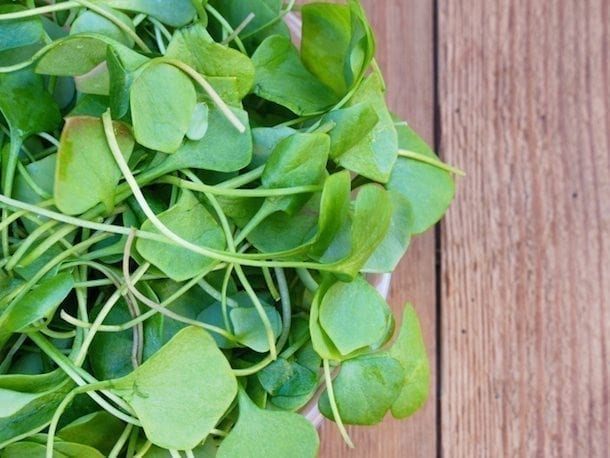Turns out even superfoods aren’t all created equal. With the giant asterisk that pretty much any one of the fruits and vegetables on this list would be better for you than something off it, researchers have ranked 41 nutrient-dense foods, ranging from all-star watercress to still-really-quite-good-for-you white grapefruit.
William Paterson University associate professor of sociology Jennifer Di Noia, PhD., led the study, which was published in the Centers for Disease Control’s Preventing Chronic Disease. Each superfood was ranked on its ability to deliver 17 nutrients believed to offer superior health benefits: potassium, fiber, protein, calcium, iron, thiamin, riboflavin, niacin, folate, zinc, and vitamins A, B6, B12, C, D, E, and K. That data was studied to calculate each food’s “powerhouse” potential: its nutrient-per-calorie ratio. The higher that score, the better. A good example: Fifty calories of kale provides 200% of the daily recommended allowance of vitamin C and 199% of vitamin A, while fifty calories of sour candies will get you 0% of either vitamin (plus eight grams of sugar).
Some nutrient benefits were capped: Top-ranking watercress, for example, provides 312% of our vitamin K needs—but since Di Noia was searching for comprehensive gains, rather than stellar single-nutrient delivery systems, she limited the degree to which that sort of benefit boosted a score. Di Noia also points out that the list lacks some heavy hitters: Phytochemicals are plant compounds that are widely believed to offer protection against cancer and other diseases, and they’re commonly found in berries. Di Noia left raspberries, cranberries, and blueberries off the list, though, telling TheWashington Post that a lack of data around phytochemicals made quantifying them difficult: “There are no uniform data on food phytochemicals and…recommended intake amounts for these compounds are lacking.”
That left the glory to—no surprise—the dark, leafy greens of the fruit and veg world. Watercress, with a score of 100.0, led the pack, closely followed by Chinese cabbage, chard, beet greens, spinach, and chicory. Next up are another half-dozen greens, including two types of lettuce (leaf and Romaine), parsley, and then collard, turnip, and mustard greens. Fruit lovers won’t find a friend here until they come to red pepper (which is probably not what they were thinking of); strawberries are far down with a score of 17.59, bested by lemons and iceberg lettuce. Leeks, sweet potatoes, and white grapefruit close out the list.
While we reiterate that the entire list—top to bottom, winners and losers alike—would constitute an exceptionally healthy grocery haul, there’s plenty to take from here, especially in the sense of easy substitutions. Perhaps it’s worth swapping a pink or red grapefruit (score: 11.64) for a white one (score: 10.47), or making a point of prioritizing Romaine lettuce (score: 63.48) over iceberg (score: 18.28). More intriguingly: Kale fans are sure to notice that their favorite dark and leafy ranks a paltry 15th here. Long live watercress?
Did your favorite veggies make this list? What will you be adding to your grocery list this week? Tell us in the comments!




